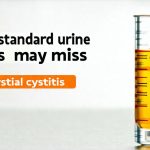Interstitial cystitis (IC), also known as painful bladder syndrome, is a chronic condition causing bladder pain and urinary frequency/urgency. It’s a frustrating illness that can significantly impact a woman’s quality of life, often leading to emotional distress alongside the physical symptoms. While the exact cause remains unknown, it isn’t typically detectable through standard urine tests or imaging – making diagnosis challenging and sometimes delayed. This article aims to provide a comprehensive overview of IC symptoms specifically in women, exploring variations in presentation, potential contributing factors, diagnostic approaches, and current understandings of symptom management options.
The impact of IC extends far beyond the physical discomfort. It can disrupt sleep, interfere with work and social activities, and contribute to feelings of isolation and anxiety. Many women describe a constant fear of needing to use the bathroom, leading to lifestyle limitations and a diminished sense of control. Because symptoms wax and wane, it can be difficult for others (and even individuals themselves) to understand the severity of the condition, further complicating support and empathy. It’s vital to remember that IC is real and deserves dedicated attention from both healthcare professionals and those living with the illness. Understanding [why cystitis is more common in women] can also provide helpful context.
Understanding IC Symptoms in Women
The hallmark symptoms of interstitial cystitis are pelvic pain and urinary urgency/frequency, but these can manifest very differently among individuals. The pain isn’t always located directly in the bladder; it can radiate to other areas like the abdomen, lower back, or even thighs. Some women experience constant, unrelenting pain, while others have intermittent flare-ups triggered by specific factors (more on those later). Urgency often feels overwhelming and sudden, making it difficult to reach a toilet in time. Frequency means needing to urinate much more often than normal—sometimes as many as 50 or even 80 times per day. Beyond these core symptoms, women may also experience:
- Pain during sexual intercourse (dyspareunia)
- Lower abdominal pressure and discomfort
- A sensation of incomplete bladder emptying
- Fatigue and general malaise
- Emotional distress – anxiety, depression, frustration
It’s important to note the wide range in symptom severity. Some women have mild symptoms that are manageable with lifestyle adjustments, while others experience debilitating pain that dramatically reduces their ability to function. There is no “typical” IC presentation, making diagnosis complex. The variation can also make it hard for patients and doctors alike to recognize IC initially; other conditions like urinary tract infections (UTIs) or pelvic inflammatory disease (PID) are often suspected first. Recognizing [first signs of interstitial cystitis] early on is important for timely intervention.
The nature of the pain itself can vary too. Some describe a burning sensation during urination, similar to a UTI, but without any evidence of infection. Others report a deep, aching pressure that’s constant and unrelenting. Still others experience sharp, stabbing pains that come and go unpredictably. This diversity underlines why it’s critical for women experiencing persistent pelvic pain and urinary symptoms to seek specialized medical evaluation. [Spotting early signs of interstitial cystitis] can help you advocate for yourself with a doctor.
Potential Contributing Factors & Triggers
While the precise cause of IC remains elusive, research suggests a complex interplay of genetic predisposition, immune system dysfunction, nerve damage, and environmental factors. It isn’t considered an infectious or cancerous condition. Several theories attempt to explain its development:
- Bladder lining defects: Some researchers believe that a compromised bladder lining allows irritating substances in urine to penetrate deeper into the bladder wall, triggering inflammation and pain.
- Autoimmune response: Others suggest an autoimmune component, where the body mistakenly attacks healthy cells in the bladder.
- Nerve damage: A theory points towards damaged nerves in the bladder leading to chronic pain signals even without obvious physical injury or inflammation.
Identifying personal triggers can be a crucial step in managing IC symptoms. These triggers vary significantly from woman to woman but commonly include:
- Certain foods and beverages (citrus fruits, coffee, alcohol, spicy foods, artificial sweeteners)
- Stress and emotional factors
- Hormonal fluctuations (related to menstrual cycle or menopause)
- Physical activity (especially impact activities)
- Prolonged sitting
- Sexual intercourse
Keeping a symptom diary can be immensely helpful in identifying these triggers. This involves recording what you eat and drink, your level of stress, physical activity, and the severity of your symptoms each day. Over time, patterns may emerge that reveal specific factors that exacerbate your condition. It’s important to approach trigger identification systematically and avoid unnecessarily restrictive diets without professional guidance.
Diagnosis & Evaluation
Diagnosing interstitial cystitis isn’t straightforward because there is no single definitive test. A diagnosis typically relies on a combination of medical history, physical examination, symptom assessment, and exclusion of other possible causes. The process often involves the following steps:
- Medical History: Your doctor will ask detailed questions about your symptoms, including their onset, severity, frequency, and any potential triggers. Be prepared to provide a thorough description of your experience.
- Physical Exam & Pelvic Examination: A physical exam helps rule out other conditions that could be causing similar symptoms. A pelvic examination may also be performed to assess for tenderness or abnormalities.
- Urine Analysis: This is done to exclude urinary tract infections and other causes of urinary symptoms.
- Potassium Chloride Sensitivity Test (PST): Involves instilling a solution into the bladder, assessing if it induces pain or discomfort. Though not always reliable, some doctors use this as part of their diagnostic process.
- Cystoscopy with Hydrodistension: This involves inserting a small camera into the bladder and filling it with fluid to stretch the bladder wall. It can help visualize any abnormalities and assess for inflammation. However, it’s important to note that cystoscopy isn’t always accurate in diagnosing IC and can sometimes even worsen symptoms.
It’s crucial to find a healthcare professional experienced in diagnosing and managing IC. A urologist specializing in pelvic pain or a gynecologist with expertise in chronic pelvic pain conditions is often the best resource. Misdiagnosis is common, so seeking specialized care can significantly improve your chances of receiving an accurate diagnosis and appropriate treatment plan. [Monitoring initial symptoms of BPH in men] is important for overall urological health awareness.
Managing Symptoms & Improving Quality of Life
Currently, there’s no cure for interstitial cystitis, but many strategies can help manage symptoms and improve quality of life. Treatment typically involves a multifaceted approach tailored to the individual’s specific needs and symptom presentation:
- Lifestyle Modifications: Identifying and avoiding personal triggers is essential. This might involve dietary changes, stress management techniques (yoga, meditation), and adjusting physical activity levels.
- Pelvic Floor Physical Therapy: Strengthens and relaxes the pelvic floor muscles, which can help alleviate pain and improve bladder control. A trained physical therapist specializing in pelvic health will guide you through exercises and techniques.
- Medications: Various medications may be used to manage IC symptoms:
- Pain relievers (over-the-counter or prescription)
- Bladder relaxants (to reduce urgency and frequency)
- Antidepressants (certain types can help with chronic pain management)
- Bladder Instillations: Involve inserting medication directly into the bladder, helping to reduce inflammation and pain.
It’s important to remember that finding the right treatment plan often requires trial and error. What works for one woman may not work for another. Open communication with your healthcare team is crucial to adjust your treatment plan as needed. Beyond medical interventions, building a strong support system—connecting with others who understand IC—can make a significant difference in coping with this chronic illness. Online communities and support groups offer valuable resources and emotional support.
Long-Term Outlook & Coping Strategies
Living with interstitial cystitis can be challenging, but it’s possible to manage symptoms effectively and maintain a fulfilling life. While there are periods of flare-ups and remission, consistent self-care and proactive management strategies can help minimize the impact on your daily activities. It’s essential to adopt a positive mindset and focus on what you can control.
Remember that IC doesn’t define you. Prioritize self-compassion and avoid blaming yourself for symptoms. Allow yourself time to rest when needed, and don’t hesitate to ask for help from friends, family, or healthcare professionals. Seek out mental health support if you’re struggling with anxiety, depression, or emotional distress related to your condition.
Staying informed about IC research and treatment options is also beneficial. New therapies are constantly being developed, so staying up-to-date can empower you to make informed decisions about your care. [Morning cramps in bladder with no other symptoms] should always be investigated by a medical professional. Ultimately, managing IC is an ongoing process that requires patience, perseverance, and a collaborative partnership with your healthcare team. Focus on building resilience and finding strategies that help you live the fullest life possible despite this chronic condition. The importance of [bladder wall resection in chronic interstitial cystitis] should be discussed with your doctor as a potential option.





















